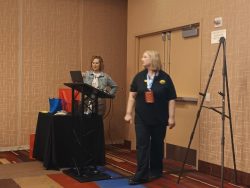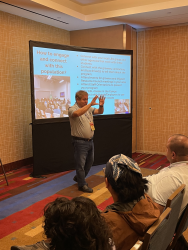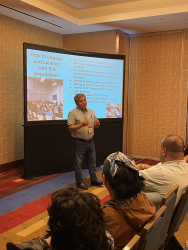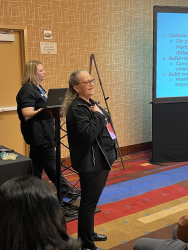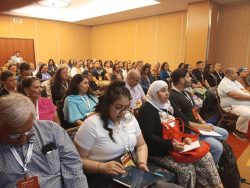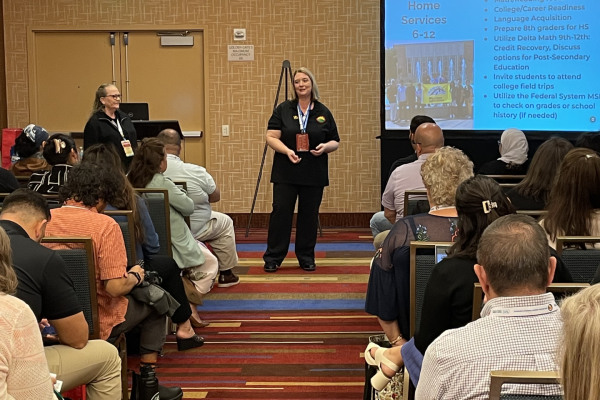Van Buren ISD Team Presents Standing-Room-Only Session at National Migrant Conference in San Francisco
On April 14, 2025, three leaders from Van Buren Intermediate School District (VBISD) in Michigan took the spotlight at the National Migrant Education Conference in San Francisco, California. Angie Gutierrez, Sarita Collins, and Jose Nolasco presented Breaking Barriers: Innovative Strategies for Engaging Migratory Families to a packed room—drawing in approximately 88 educators and administrators and filling the space well beyond capacity.
Listen to our Cool AI-Generated Podcast: Breaking Barriers
The session highlighted VBISD’s multi-layered approach to serving migratory children, youth, and families through year-round engagement. With a strong focus on equity, accessibility, and community collaboration, the team shared strategies that have made a tangible impact across Van Buren County, home to a richly diverse and mobile student population.
A Comprehensive Migrant Education Model
VBISD supports migrant families through a comprehensive model that spans the entire year, including:
-
School-Year Migrant Program: Offers academic support, tutoring, and social-emotional learning during the academic year for migratory students enrolled in schools across the county.
-
Six-Week Summer Program: Provides hands-on, enriched learning experiences through partnerships with schools, community organizations, and local agencies.
-
Home-Based Program: Delivers personalized, one-on-one instruction in literacy, math, and life skills—right in the homes of migrant families, meeting them where they are and making learning truly accessible.
-
Parent Advisory Council (PAC): Hosts regular meetings throughout the year where families can share input, build leadership skills, and stay informed about their children’s education and available resources.
This flexible and family-centered approach ensures that all migratory families—including those with limited access to transportation, those living in migrant camps, H2A workers, and Out-of-School Youth (OSY)—are meaningfully engaged and supported.
By the Numbers: Van Buren County Snapshot
VBISD serves:
-
14 school districts (including one virtual academy)
-
16,658 students total
-
2,516 students with an IEP
-
1,592 multilingual students
-
8,206 economically disadvantaged students
-
667 homeless students (2023–2024)
Migrant Student Recruitment:
-
556 students recruited in Summer 2024
-
471 students recruited in Fall 2024–25
-
513 students recruited from 3 additional districts (Summer & Fall combined)
Out-of-School Youth (OSY):
-
VBISD: 237
-
Other Districts: 14
These numbers reflect a growing and highly mobile population that requires flexible, innovative programming.
Community at the Center
Throughout their presentation, the VBISD team emphasized the importance of building trust and relationships with families as the foundation for student success. Their home-based services are especially critical for reaching families who may not be able to attend traditional programming. By providing instruction and support directly in the home, the team removes barriers and fosters a deeper connection between families and education.
The session also explored how VBISD hosts tailored events for H2A workers and OSY, as well as regular camp-based meetings for families that focus on literacy, math, and other core skills—all contributing to a stronger, more connected community.
Participants left the session equipped with a variety of ideas and resources, plus time to brainstorm how they could replicate similar strategies in their own districts. The high energy and engagement in the room made it clear: VBISD’s work is resonating far beyond Michigan.
Angie Gutierrez, Sarita Collins, and Jose Nolasco represented Van Buren ISD with expertise, passion, and an unwavering commitment to equity. Their presentation showcased what’s possible when schools go beyond traditional models to truly meet the needs of migratory families—with compassion, creativity, and consistency.


